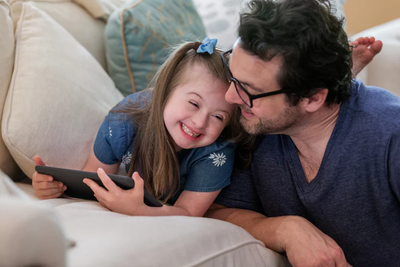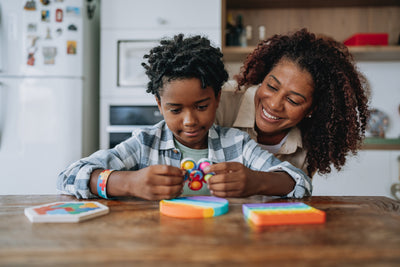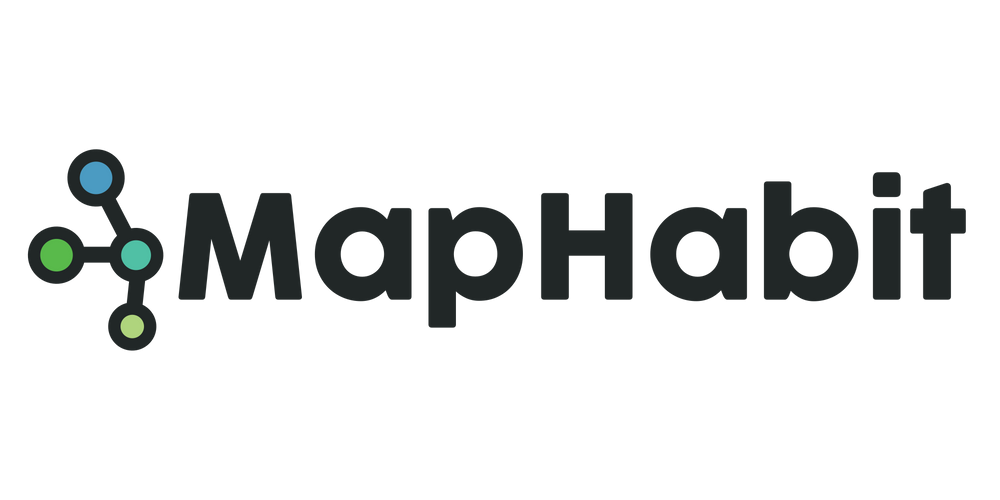Progress monitoring in special education is when teachers check how well a student is doing on their goals. A common example is tracking reading speed by having a student read out loud for one minute each week and counting how many words they read correctly. This helps teachers see if their teaching is working.
Progress monitoring helps make sure students with special needs are learning and growing. In this article, you will learn what progress monitoring is, why it matters, different ways to track progress, and real examples teachers use every day.
What Does Progress Monitoring Mean in Special Education?
Progress monitoring is a way to measure if a student is learning what they need to learn. Think of it like checking the temperature when you are sick. You check it often to see if you are getting better.
For students with disabilities, progress monitoring means looking at their work often to see if they are reaching their goals. These goals are written in something called an IEP, which stands for Individualized Education Program.
The law requires schools to track student progress regularly and use actual data to make smart choices about teaching. This is not just a good idea. It is the law under IDEA, the Individuals with Disabilities Education Act.
Why Progress Monitoring Is So Important
Progress monitoring helps in many ways. It catches problems early so if a student is not learning fast enough, teachers can tell right away and change what they are doing. It also shows what works so teachers can see which teaching methods help the student learn best.
Progress monitoring keeps everyone informed so parents, teachers, and helpers all know how the student is doing. And it follows the law because schools must show they are helping students make real progress.
After the Endrew F. court case in 2017, schools must now give students more than the bare minimum. They must help students make real, meaningful progress.
Different Ways to Track Student Progress
Teachers use many different tools to check on student learning. The best tool depends on what skill the student is working on.
Curriculum Based Measurement (CBM)
CBM is a quick test that takes only 1 to 3 minutes. Teachers give the same kind of test over and over to see if the student is getting better.
CBM looks at what a student can do toward a big end goal, not just one skill at a time. For example, reading is not just about knowing sounds. It is about using all the skills together to read.
Here are common CBM tests. For reading, the student reads out loud for one minute while the teacher counts words read correctly. For math, the student solves math problems in a set amount of time. For writing, the student writes for a few minutes and the teacher counts words or sentences written. For spelling, the teacher says words out loud and the student writes them down in a short time.
Watching and Recording Behavior
For students working on behavior goals, teachers watch and write down what they see. This might happen during class time or special one on one sessions.
Teachers might track how many times a behavior happens, like calling out in class. They also track how long a behavior lasts, like staying in a seat for 10 minutes. Sometimes they track how strong or loud the behavior is.
Frequency counts help teachers tally specific behaviors in real time, which helps them respond faster to behavior problems.
Checklists and Rating Scales
These are lists of skills or behaviors. Teachers mark off which ones the student can do. This works well for life skills like getting dressed without help, following a morning routine, or using polite words when asking for something.
Tests and Quizzes
Regular classroom tests can also show progress. But these are usually given less often than CBM, maybe once a month or at the end of a unit.
Real Examples of Progress Monitoring
Let me show you what progress monitoring looks like in real classrooms.
Example 1: Reading Fluency Goal
Emma is a third grader who struggles with reading. HerIEP goal says she will read 80 words correctly per minute by the end of the school year.
How the teacher tracks this:
Every week, Emma reads a new passage out loud for one minute. The teacher marks which words Emma reads correctly and writes the number on a graph. After four weeks, the teacher can see if Emma is improving fast enough.
If Emma is not improving, the teacher might try a different reading program, give Emma more practice time each day, or work with Emma in a smaller group.
Example 2: Math Computation Goal
A student named Lebron had trouble with early reading sounds. His teacher used special reading tests every week to check if extra lessons were helping. His scores went from 0 to 43 sounds in just a few months.
For math, it might look like this. Marcus needs to solve additional problems faster. His goal is to solve 20 problems correctly in 2 minutes.
How the teacher tracks this:
Once a week, Marcus gets a worksheet with 30 additional problems. He works for 2 minutes. The teacher counts how many he got right and the numbers go on a chart.
Example 3: Behavior Goal
Sarah has trouble staying in her seat during class. Her goal is to stay seated for 20 minutes at a time.
How the teacher tracks this:
The teacher sets a timer for the target time. Every time Sarah gets up, the teacher makes a mark. At the end of the day, the teacher counts the marks. The data shows if Sarah is getting better at staying seated.
For behavioral goals, frequency counts track how often disruptive behaviors happen, helping the team understand if interventions are working.
Example 4: Social Skills Goal
Jason is working on using kind words when he gets upset. His goal is to use calm language instead of yelling when frustrated.
How the teacher tracks this:
Teachers and helpers watch Jason during the day. They write down each time Jason uses calm words or yells. They compare the two numbers and look for patterns, like what times of day are hardest.
How Often Should Teachers Collect Data?
The answer depends on the student and the goal. Some general rules help guide this decision.
Students needing lots of help should have progress checked 1 to 2 times per week. Students making good progress can be checked once or twice per month. Behavior goals often need daily tracking at first.
The IEP team documents how often progress will be checked, and parents get updates on a schedule, like every two weeks or monthly.
The key is to check often enough to know if teaching is working, but not so much that it takes away from learning time.
What Do Teachers Do With the Data?
Collecting numbers is not enough. Teachers must look at the data and make decisions.
When teachers review the data, they ask important questions. Is the student making enough progress to reach the goal? Is progress happening too slowly? What teaching method seems to work best? Does anything need to change?
Making Changes Based on Data
If a student is not making progress, the teacher might change the teaching method, give more practice time, or work with the student in a smaller group or one on one. They might try different materials or tools or get help from a specialist.
If a student is doing great and learning fast, the teacher might make the goal harder, reduce how much support the student gets, or let the student work more on their own.
Tools That Make Progress Monitoring Easier
Many schools now use technology to track progress. These tools save time and make it easier to see patterns.
Digital tools can store all student data in one place and make graphs automatically. They send alerts if a student is falling behind and share updates with parents quickly.
Popular options include special education software, apps on tablets, and online programs built just fortracking IEP goals.
Some teachers still use paper and pencil. This can work just fine, especially if you keep a binder for each student, use simple data sheets with boxes to fill in, and graph progress by hand on paper.
The best system is the one teachers will actually use every single day.
Working Together as a Team
Progress monitoring works best when everyone helps. This includes special education teachers who lead the data collection and look at results. General education teachers watch student progress in regular classes. Classroom helpers collect data during lessons. Therapists track progress on speech, motor, or other special goals. And parents share what they see at home.
A team approach is often used, where data is reviewed collaboratively by educators, specialists, and administrators.
Regular team meetings help everyone stay on the same page. During these meetings, the team looks at graphs and data together, talks about what is working, decides if changes are needed, and celebrates progress.
Common Questions About Progress Monitoring
How Is This Different From Regular Report Cards?
Report cards come out a few times a year and show overall grades. Progress monitoring happens much more often and focuses on specific IEP goals.
Think of it this way. Report cards are like taking a family photo once a year. Progress monitoring is like checking your phone for new pictures every day.
What If a Student Is Not Making Progress?
This is actually good information to have. It tells the team something needs to change. The team should meet and talk about several things. Is the goal too hard or too easy? Is the teaching method not working? Does the student need more time or different support? Are there other things affecting learning?
Do Parents Get to See the Data?
Yes! Schools must share progress reports with parents regularly. This might be monthly progress reports, quarterly updates, or reports that go home with report cards.
Parents can always ask to see the data at any time. IDEA requires that IEP teams document when periodic reports on progress will be provided to parents.
Legal Requirements for Progress Monitoring
Progress monitoring is not optional. Federal law says schools must do it. Here is what the law requires.
IEPs must say how progress will be measured. Schools must tell parents how often they will get updates. Schools must use real data, not just opinions. And if students are not making progress, schools must make changes.
The law wants to make sure every student with an IEP gets help that really works. Progress monitoring is how schools prove they are doing their job.
For families looking foradditional support services orspecialized programs, understanding progress monitoring helps you know what to ask for and expect.
Tips for Successful Progress Monitoring
Here are some simple tips that help progress monitoring work better.
Keep it simple by choosing methods that are quick and easy. If data collection takes too long, it will not get done. Be consistent and use the same test or method each time. This makes it easier to compare results.
Graph the data because pictures are easier to understand than lists of numbers. Even simple hand drawn graphs help. Set reminders and put data collection times on your calendar so you do not forget.
Share good news because when students make progress, you should celebrate! Show them their graph going up. Ask for help because if progress monitoring feels too hard, talk to your special education team aboutsupport options.
Using Technology for Better Results
Modern tools and resources can make progress monitoring much easier. Digital solutions help teachers in several ways.
They can collect data with just a few taps on a tablet. They can see progress graphs right away. They get reminders when data is due. And they can share information with the whole team instantly.
For families seeking comprehensive support, explore options throughstate funding programs that may cover educational tools and services.
Final Thoughts
Progress monitoring is one of the most important parts of special education. It helps teachers know if students are learning, helps parents stay informed, and makes sure schools follow the law.
The best progress monitoring is simple, happens regularly, and leads to real changes when needed. Whether tracking reading speed, math facts, or behavior goals, the key is to use the data to help students succeed.
Remember, progress monitoring is not about judging students. It is about making sure every student gets the help they need to learn and grow. When done right, it helps students reach goals they might not have thought possible.
If you are a parent or teacher working with students who have IEPs, make progress monitoring a priority. Check the data often, ask questions, and work together as a team. With good progress monitoring, every student can make real, meaningful progress.








